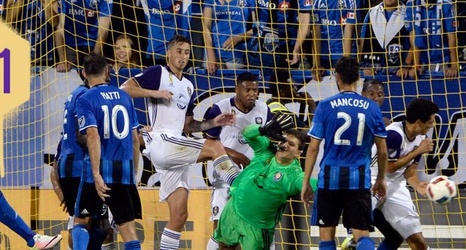In soccer, there are two types of free kicks: direct and indirect. A direct free kick means that the kick can be taken as a direct shot. An indirect free kick means that someone else has to touch the ball before it can be taken as a shot on goal.
When is an indirect free kick given? Well, usually the indirect free kick is given if a goalkeeper commits a specific offense in his or her own penalty area. These offenses include:
- Touching the ball again with his or her hands after he or she has released it from possession and before it has touched another player
- Touching the ball with his or her hands after it has been deliberately kicked to him or her by a teammate
- Touching the ball with his or her hands after he or she has received it directly from a throw-in by a teammate
An indirect free kick can also be award to a team if the opposing player:
- Plays in a dangerous manner
- Prevents the goalkeeper from releasing the ball
- Impedes the progress of an opponent
- Commits any offense that stops play that does not warrant a direct free kick
When an indirect kick is awarded, it is taken from the spot where the foul was committed.
